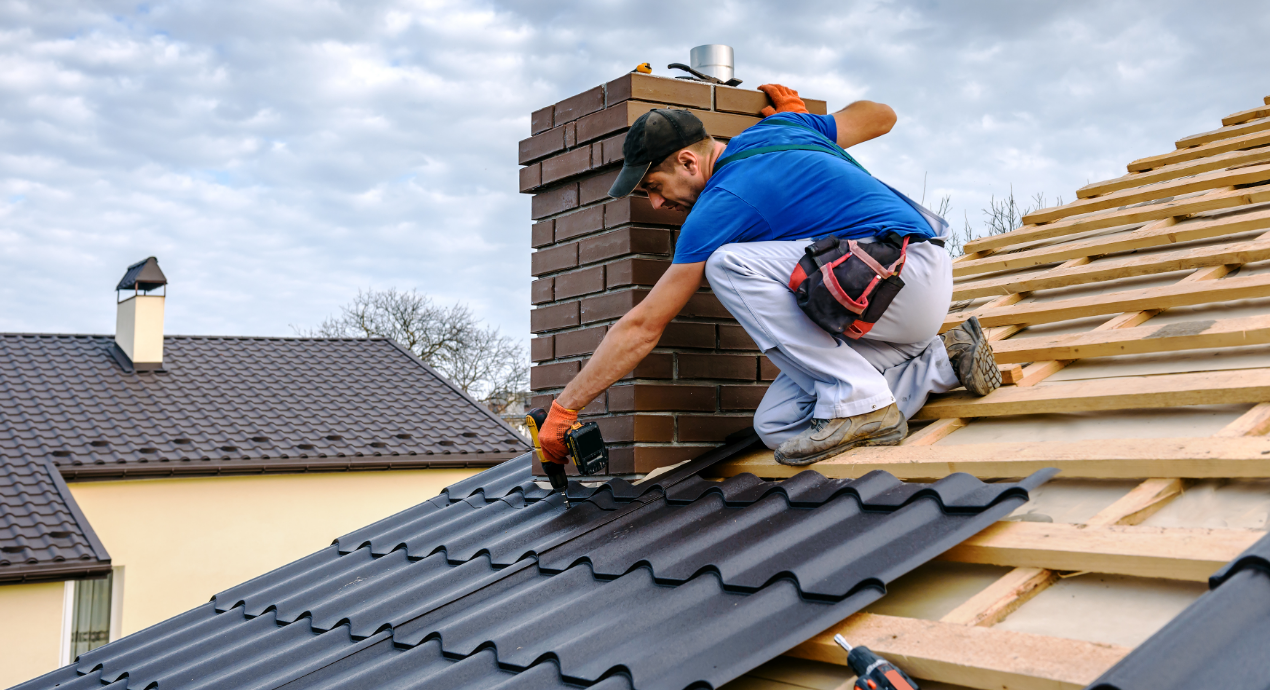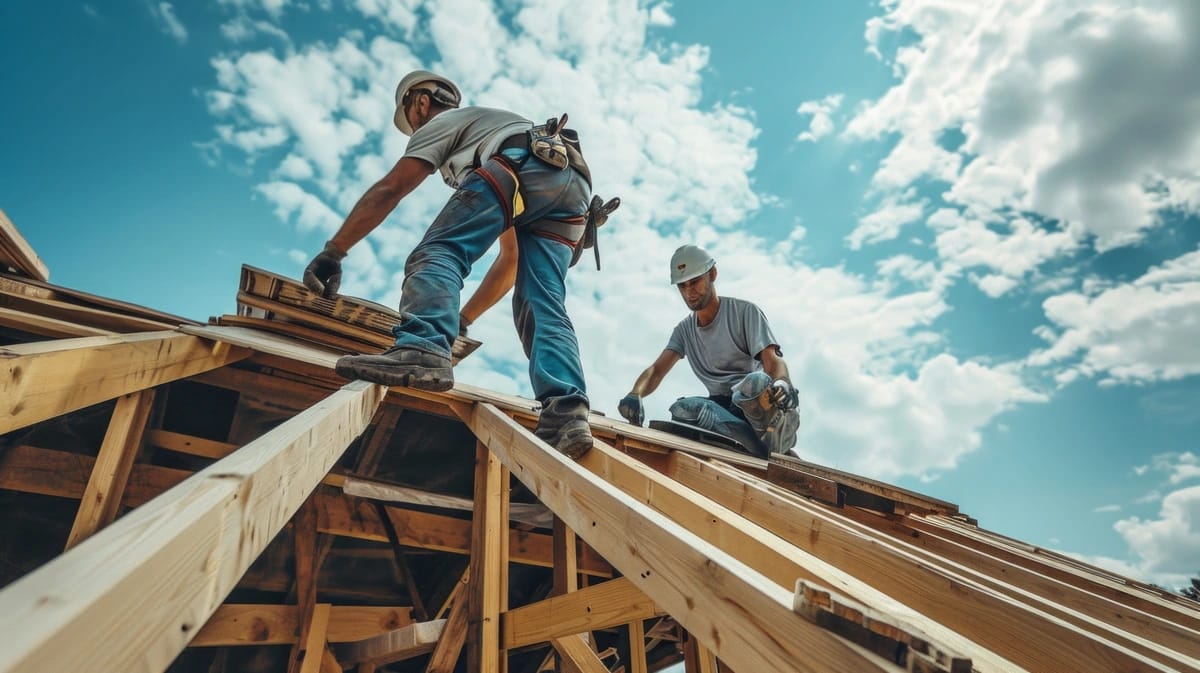Roofing Oahu: Professional Roofer for Your Oahu Property
Roofing Oahu: Professional Roofer for Your Oahu Property
Blog Article
Comprehending the Different Kinds of Roofing Systems: A Comprehensive Guide for Homeowners
With a range of options-- ranging from the typical gable to the contemporary level-- each type presents one-of-a-kind benefits and difficulties that must align with the house owner's environmental considerations and particular requirements. As we explore the complexities of different roof covering types, it comes to be noticeable that one size does not fit all; the ideal choice might amaze you.
Gable Roofs
Saddleback roofs, defined by their triangular shape, are amongst the most popular roof designs due to their simplicity and effectiveness in dropping water and snow. This style features two sloping sides that meet at a ridge, permitting effective water drainage and minimizing the risk of water accumulation. The high pitch commonly connected with saddleback roofs improves their capacity to handle heavy rainfall, making them ideal for various climates.
In addition to their practical benefits, gable roofings offer visual versatility. They can be adapted to different architectural styles, from conventional to modern-day homes. The layout can likewise fit additional attributes such as dormer windows, which enhance all-natural light and ventilation in the attic area.
Additionally, saddleback roofs give enough area for insulation, adding to power efficiency. Homeowners can choose from a selection of roofing materials, consisting of asphalt roof shingles, metal, and ceramic tiles, further improving customization choices.
Despite their benefits, gable roofs may require extra assistance in locations susceptible to high winds or heavy snowfall. Overall, the saddleback roof stays a favored choice as a result of its blend of functionality, durability, and aesthetic allure.
Flat Roofs
Flat roofs are frequently recognized for their minimal style and practical applications, particularly in business and commercial setups (oahu roofing). These roofings include a horizontal or nearly straight surface area, which enables easy building and flexible space application. While they might lack the visual charm of pitched roofing systems, level roofing systems offer countless advantages, particularly in urban settings where making the most of room is vital
Among the primary benefits of flat roofing systems is their access. Home owners can use the roof area for different functions, such as rooftop gardens, balconies, or photovoltaic panel setups. Furthermore, flat roofs are generally extra cost-effective to install and keep contrasted to their sloped equivalents, as they require less materials and labor.
Nonetheless, flat roofing systems do present particular challenges. Correct drain is necessary to protect against water merging, which can result in leaks and architectural damage. For this reason, selecting premium waterproofing products and regular examinations are crucial for guaranteeing durability. Common materials utilized for level roofing systems consist of built-up roofing (BUR), changed asphalt, and single-ply membrane layers, each offering distinct advantages. In general, level roofing systems act as a useful and versatile option for lots of homeowners and companies alike.
Hip Roof Coverings
Hip roofings are identified by their sloped sides that converge on top, creating a ridge. This style stands out from gable roofs, as all 4 sides of a hip roofing incline downwards towards the walls, offering a much more stable structure. The angle of the inclines can vary, enabling adaptability in building visual appeals and capability.
Among the main benefits of hip roofing systems is their ability to stand up to heavy winds and damaging climate condition. The sloped surface areas enable better water drain, lowering the risk of leaks and water damage. Additionally, hip roofings use increased attic room, which can be made use of for storage and even converted into comfortable locations.
Nevertheless, building a hip roofing can be a lot more complicated and expensive than simpler roofing system kinds, such as gable roof coverings. The extra material and labor associated with developing the slopes and ensuring proper architectural honesty can bring about greater costs. Regardless of these disadvantages, lots of property owners favor hip roof coverings for their durability, aesthetic charm, and potential for energy check my source performance.
Mansard Roof Coverings
Mansard roof coverings, frequently acknowledged by their special four-sided design, feature two slopes on each side, with the lower incline being steeper than the top. This site web building design, stemming from France in the 17th century, is not only visually appealing but practical, as it makes best use of the usable space in the upper floorings of a building. The high lower incline enables even more clearance, making it an ideal option for loft spaces or attic rooms, which can be transformed right into living spaces.
Mansard roofing systems are identified by their convenience, accommodating numerous building designs, from typical to modern-day. They can be constructed with various materials, including asphalt roof shingles, slate, or metal, supplying home owners with a variety of alternatives to suit their preferences and budgets. Additionally, the design permits the assimilation of dormer home windows, boosting all-natural light and air flow in the top levels.
Nevertheless, it is necessary to take into consideration the possible disadvantages. Mansard roof coverings might need more maintenance due to the intricacy of their layout, and their high slopes can be testing for snow and rain drainage. On the whole, mansard roofings integrate beauty with practicality, making them a prominent choice amongst house owners seeking distinctive architectural features.
Lost Roof Coverings
As property owners increasingly look for simpleness and functionality in their building styles, shed roof coverings have become a preferred option. Characterized by a solitary sloping plane, a shed roofing system offers a minimalist visual that matches various home designs, from modern to rustic.
One of the key advantages of a shed roofing system is its uncomplicated building, which commonly equates to decrease labor and material expenses. This layout permits efficient water drainage, minimizing the threat of leaks and water damage. Furthermore, the vertical incline gives sufficient area for skylights, boosting natural light within the interior.
Lost roofs likewise use convenience in terms of use. They can be effectively integrated into additions, garages, or outside frameworks like sheds and pavilions. In addition, this roof style can fit different roof covering materials, including metal, asphalt shingles, and even eco-friendly roof coverings, aligning with environmentally friendly efforts.
Nonetheless, it is important to consider regional climate conditions, as heavy snow loads might necessitate modifications to the roofing's angle or framework. Generally, dropped roofings offer a practical and aesthetically pleasing choice for house owners seeking to maximize capability without endangering design.
Final Thought


Gable roofing systems, identified by their triangular shape, are amongst the most popular roof designs due to their simplicity and efficiency in losing water and snow. oahu roofing. The high pitch frequently associated with gable roofing systems boosts their capacity to deal with heavy precipitation, making them appropriate for numerous environments
While they may lack the aesthetic allure of pitched roofing systems, flat roof coverings offer various advantages, particularly in urban settings where taking full advantage of area is critical.

Report this page